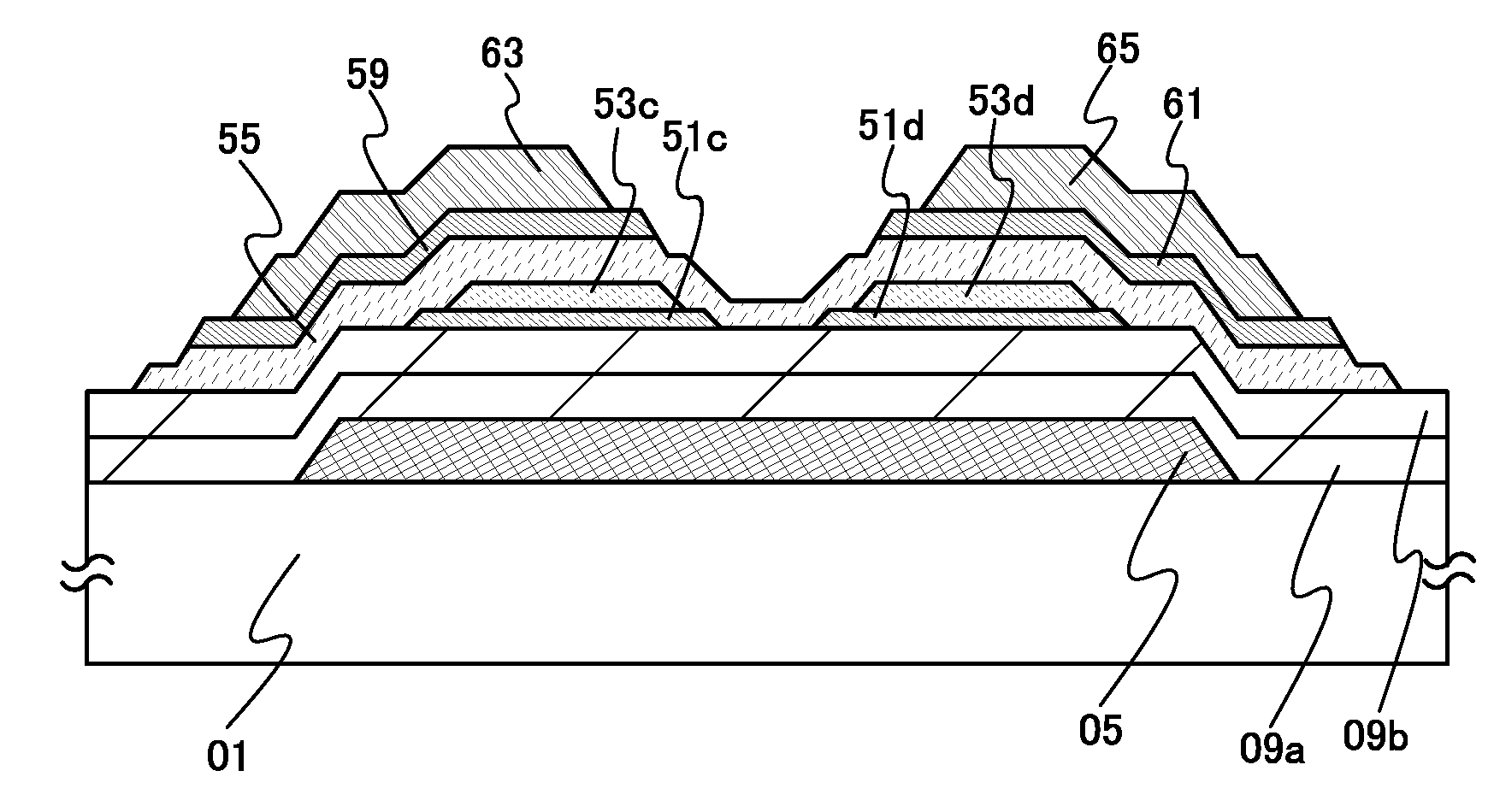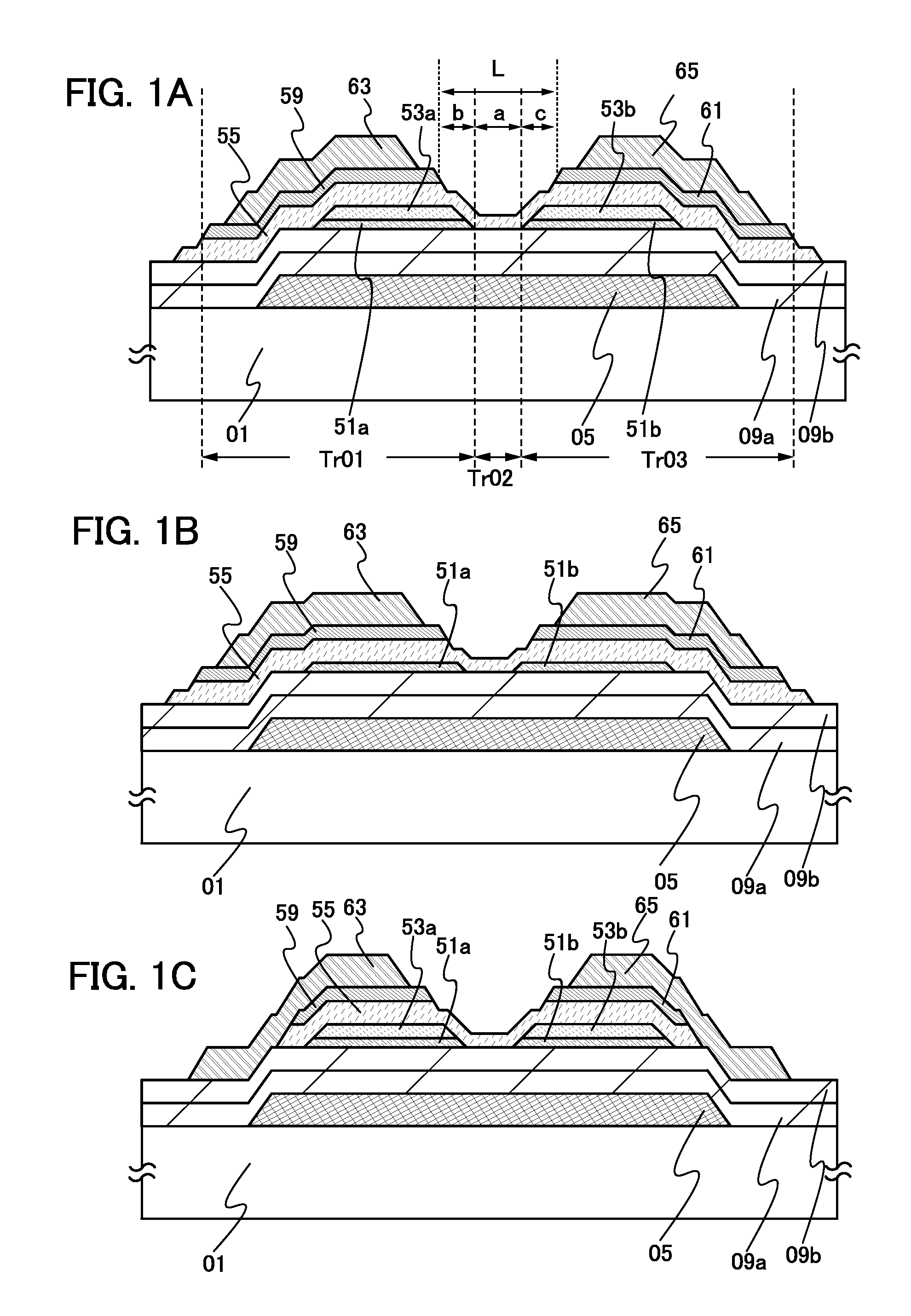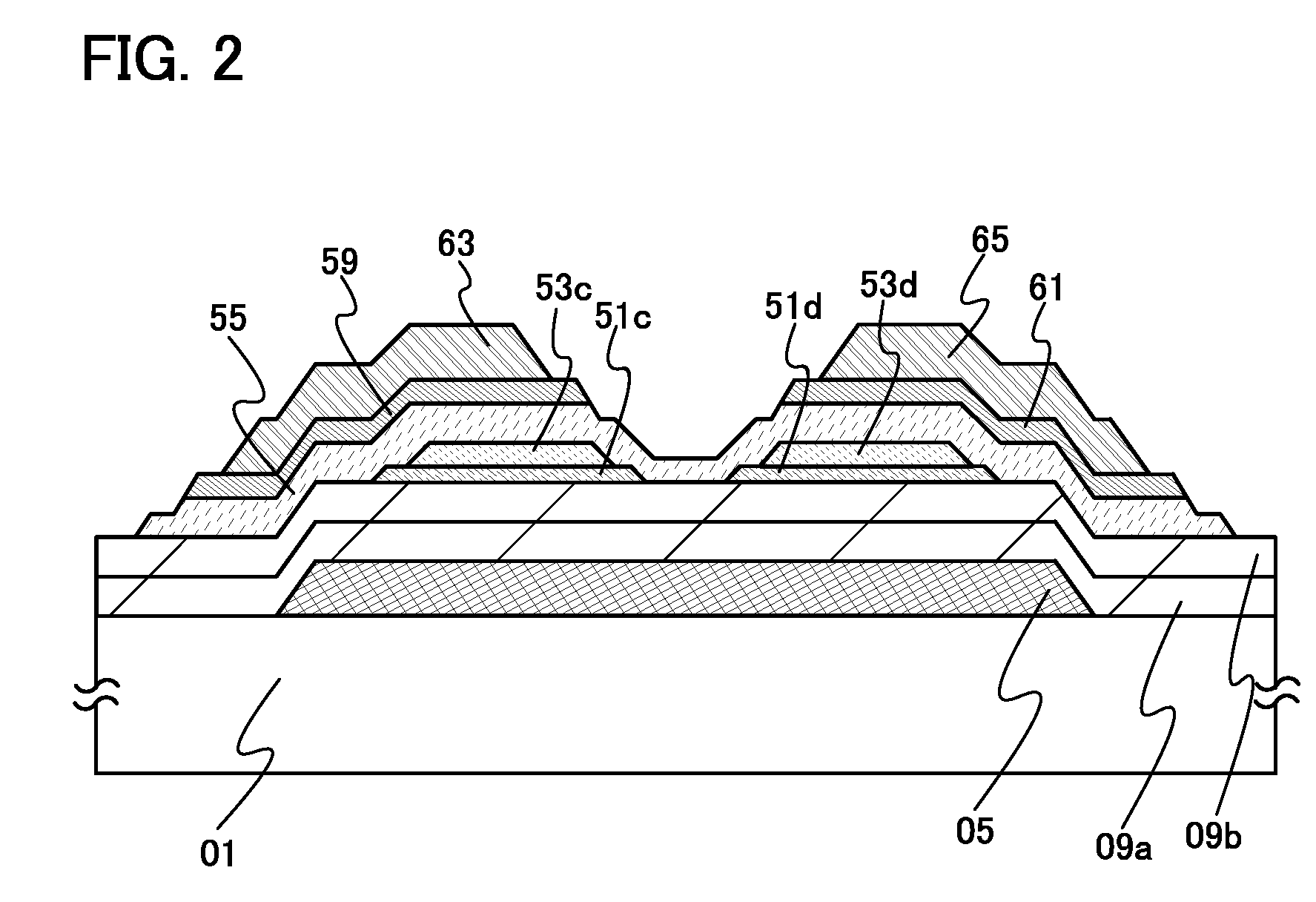Thin-film transistor and display device
a thin film transistor and display device technology, applied in semiconductor devices, instruments, electrical apparatuses, etc., can solve the problems of insufficient switching characteristics, low on-state current, high off-state current, etc., and achieve high speed and increase the effect of field effect mobility
- Summary
- Abstract
- Description
- Claims
- Application Information
AI Technical Summary
Benefits of technology
Problems solved by technology
Method used
Image
Examples
embodiment 1
[0058]In this embodiment, structures of the thin-film transistor will be described using FIGS. 1A to 1C, in which the off-state current is lower as compared to the thin-film transistor including a microcrystalline semiconductor layer for the channel formation region and operation at higher speed can be performed and the on-state current is higher as compared to the thin-film transistor including an amorphous semiconductor layer for the channel formation region.
[0059]In a thin-film transistor shown in FIG. 1A, a gate electrode 05 is formed over a substrate 01, gate insulating layers 09a and 09b are formed over the gate electrode 05, conductive layers 51a and 51b which are provided with a space therebetween are formed over the gate insulating layer 09b, and buffer layers 53a and 53b which are provided with a space therebetween are formed over the conductive layers 51a and 51b. The buffer layers 53a and 53b are about overlapped with the conductive layers 51a and 51b. Further, an amorph...
embodiment 2
[0102]In this embodiment, other shapes of the conductive layers 51a and 51b and the buffer layers 53a and 53b will be described using FIG. 2.
[0103]A thin-film transistor shown as a cross-sectional structure in FIG. 2 is a thin-film transistor in which a buffer layer 53c and a buffer layer 53d are formed inside of a conductive layer 51c and a conductive layer 51d provided with a space therebetween, respectively. That is, in the thin-film transistor, the buffer layers 53c and 53d each with a smaller area than each of the conductive layers 51c and 51d are formed, and the conductive layers 51c and 51d are partly exposed from the respective buffer layers 53c and 53d. With such a structure, when the conductive layers 51c and 51d are microcrystalline semiconductor layers, metal silicide layers, or metal layers, the crystallinity of the amorphous semiconductor layer 55 which is in contact with the conductive layers 51c and 51d can be improved using the microcrystalline semiconductor layers,...
embodiment 3
[0106]In this embodiment, other embodiments of the buffer layers will be described using FIGS. 3A and 3B. In this embodiment, buffer layers 52a and 52b each are formed using an insulating layer.
[0107]In a thin-film transistor shown in FIG. 3A, a gate electrode 05 is formed over a substrate 01, gate insulating layers 09a and 09b are formed over the gate electrode 05, conductive layers 51a and 51b which are provided with a space therebetween are formed over the gate insulating layer 09b, and the buffer layers 52a and 52b which are provided with a space therebetween are formed over the conductive layers 51a and 51b. The buffer layers 52a and 52b are about overlapped with the conductive layers 51a and 51b. Further, an amorphous semiconductor layer 55 which covers the side surfaces of the conductive layers 51a and 51b and the buffer layers 5S2a and 52b and the top surfaces of the buffer layers 52a and 52b is formed. A pair of impurity semiconductor layers 59 and 61 in which an impurity e...
PUM
 Login to View More
Login to View More Abstract
Description
Claims
Application Information
 Login to View More
Login to View More - R&D
- Intellectual Property
- Life Sciences
- Materials
- Tech Scout
- Unparalleled Data Quality
- Higher Quality Content
- 60% Fewer Hallucinations
Browse by: Latest US Patents, China's latest patents, Technical Efficacy Thesaurus, Application Domain, Technology Topic, Popular Technical Reports.
© 2025 PatSnap. All rights reserved.Legal|Privacy policy|Modern Slavery Act Transparency Statement|Sitemap|About US| Contact US: help@patsnap.com



